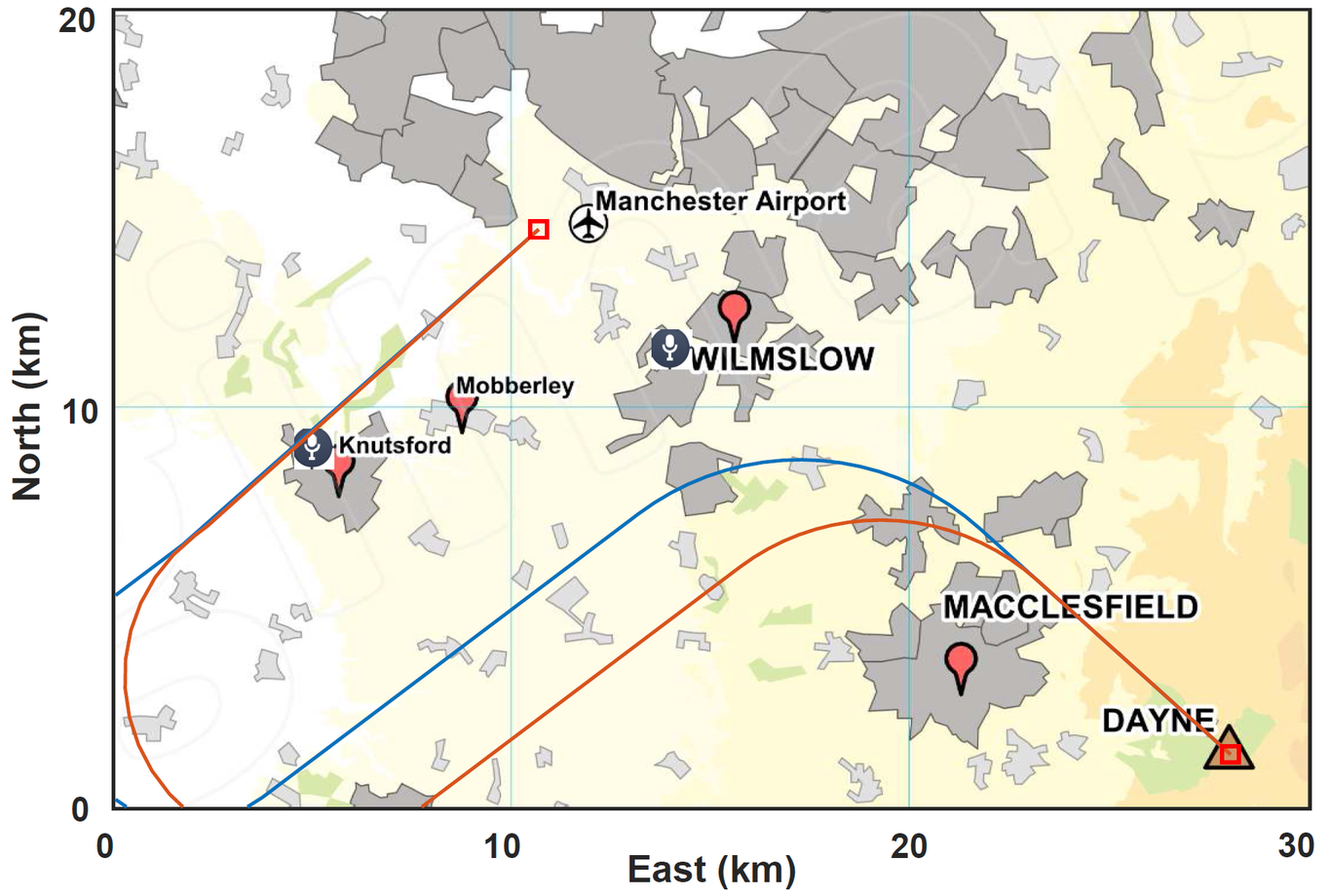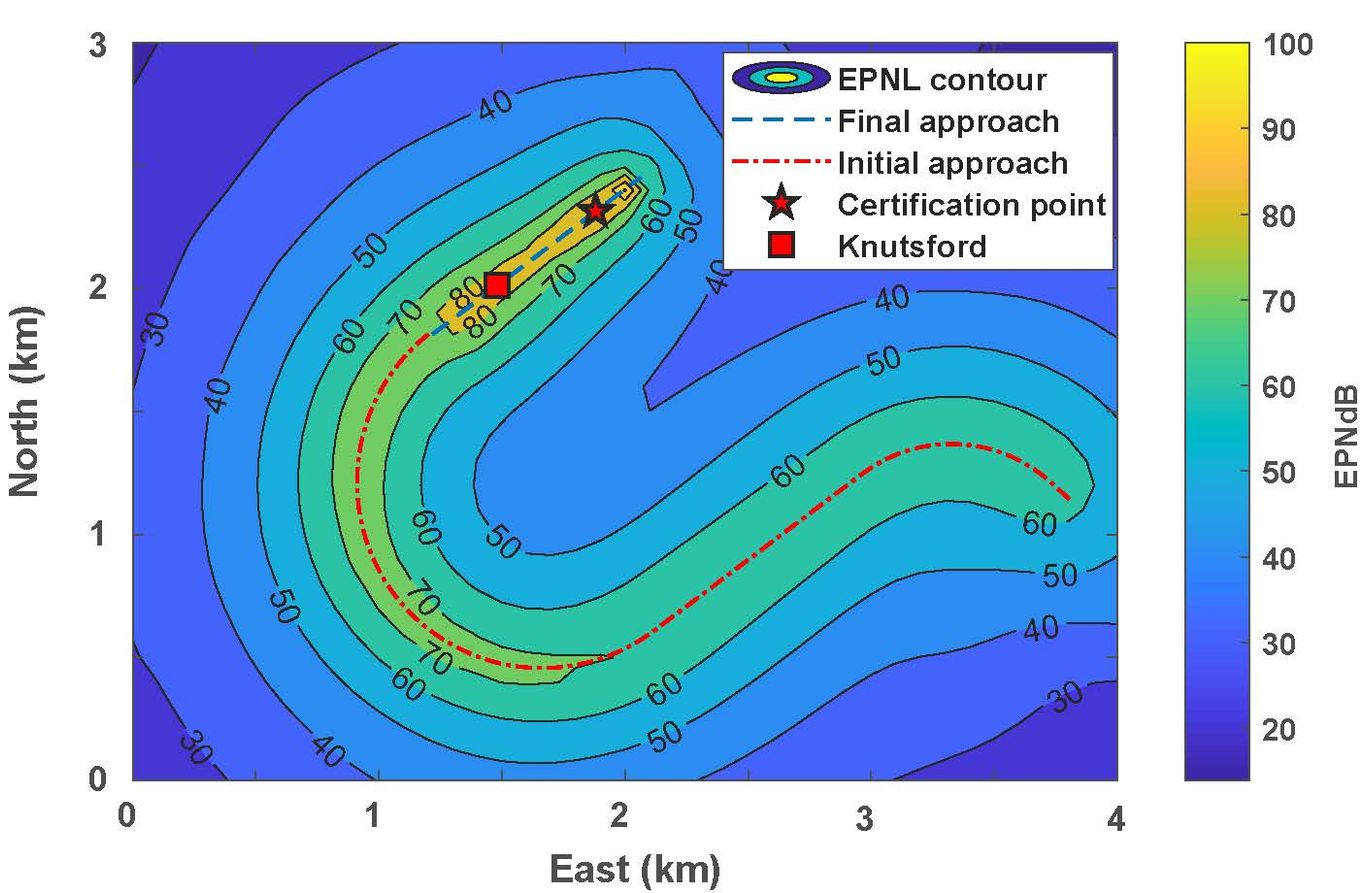Technical Note: Arrival Flight Optimisation
A sophisticated mathematical/control problem
We developed optimal solutions in aircraft noise and environmental emissions on arrival and landing at a busy international airport. This is a constrained optimal control problem: either initial-value or a two-value boundary problem. The cost functions are either acoustic emissions or a combination of noise, engine emissions and health value functions. Official population statistics are used to quantify the effects around the airport.
In the figure below we a commercial aircraft approaching Manchester airport (ICAO = MAN) from the Southern holding stack DAYNE (approximately 53o 14’ N ; 2o 1’ W), planned to land on runway 05L.
The flight trajectory is divided in five segments planned to enter the final ILS (Instrumented Landing System). For the initial objective, we need to find an entry to the ILS with minimum flight time and fuel emissions. In the second segment, we target minimum noise and minimum fuel burn. However, since the source-receiver is still too high, noise is not a key parameter yet.
Following sophisticated numerical optimisation methods demonstrated recently (DOI: 10.1016/j.ast.2022.107502), we obtain a trajectory for minimum emissions (carbon-dioxide and nitrogen oxides) that is 5.5% faster than the standard trajectory. The flight track is shown in the Figure below. The corresponding EPNL contour in the bottom graph.

Another problem, not illustrated here, is the optimal landing dispatch of a fleet of different airplanes.

